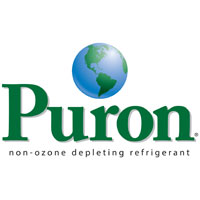Indoor air pollution is common in homes and the causes vary widely—these include pets, poor ventilation, and mold, among many others. Indoor air quality testing is a helpful service that can benefit your home by helping you become aware of pollutants and irritants that you may not know even exist in your air.
Indoor Air Quality Testing generally involves a collection of samples from your home’s air and building surfaces and may even involve computer generated air flow models of your home. This type of testing can help you discover whether these substances are lurking in your home:
Radon:
This invisible radioactive gas is probably the most problematic regarding indoor air quality and is responsible for many deaths each year. Radon can enter buildings as a “soil gas” or through contaminated drinking water. Homeowners can mitigate radon by increasing ventilation, improving water drainage systems, and sealing concrete slab floors.fi
Carbon Monoxide:
This indoor air contaminate is colorless, odorless, and highly toxic. Carbon Monoxide is a byproduct of the incomplete combustion of fossil fuels, such as from faulty HVAC systems, tobacco smoke, and even space heaters that use fossil fuels. These substances can cause many effects from Carbon Monoxide buildup, include headaches, nausea, and even death.
Pet Dander and Debris:
Pet dander and other debris are common in homes with pets, yet homeowners should be aware of the potential concerns regarding air quality. Pet dander, which is essentially tiny flakes of skin from your pet, along with pet hair, can cause buildup in your home and have a major effect on your home’s air quality. Dander and other microscopic debris can get trapped within your home’s ductwork and can circulate throughout your home each time your HVAC system is turned on.
Asbestos:
Although most buildings built after 1975 do not contain asbestos, older buildings may house some of this problematic material. Typically, the asbestos fiber found in these older buildings do not cause any health concerns until they are disturbed by remodeling or home improvement efforts, such as drilling, sawing, or other renovations. When the asbestos containing materials are damaged, tiny asbestos fibers are released into the air. This can cause significant concerns for your lungs, and unfortunately, most symptoms from asbestos exposure don’t surface until almost 20 years after a person’s exposure to asbestos.
Mold:
Mold can cause concerns for your home’s air quality and are almost always caused by excessive moisture. Mold’s growth can be inhibited by keeping a humidifier in your home and making sure that the humidity levels in your home stay below 50%. A thorough mold inspection could potentially require a bit of destruction to your home, since mold tends to hide in hard to see areas, such as behind drywall or within your home’s foundation. Mold should be taken seriously as it can affect your home’s air quality, and cause extra issues for family members who suffer from asthma.
All of these potentially harmful substances can be discovered (and subsequently controlled) through Indoor Air Quality testing. Your home’s air quality is important for your health and your comfort. Be sure to get your air quality inspected if you suspect any of the above concerns. If you need help finding the right indoor air quality products for your home comfort needs, contact us today.













